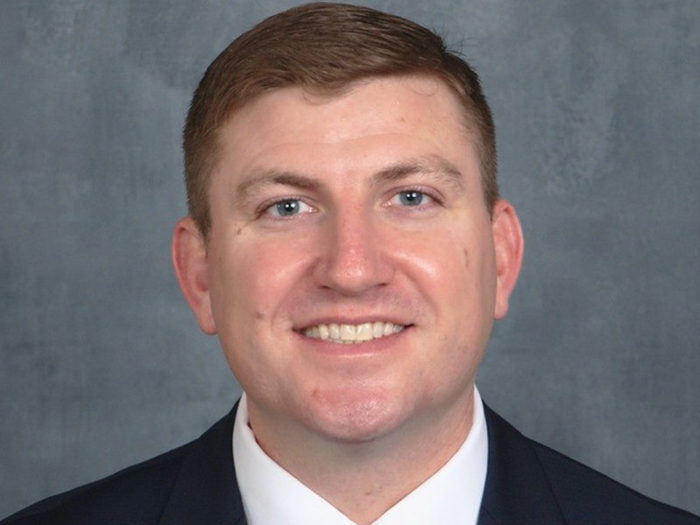Pot and Policy
Practitioners Consider Practical Applications of Medical Marijuana

While attorneys weigh the reasons for the recent New Mexico ruling on medical marijuana, others are looking at the possible practical implications. One, for example, is whether the decision will spur more recommendations for medical marijuana.
“There is a growing body of medical evidence that marijuana can be useful for pain treatment,” said Jim Andrews, executive vice president of pharmacy services for Healthcare Solutions. “However, additional studies are needed that include larger patient populations and longer utilization periods prior to inclusion in any medical treatment guidelines.”
In the near term, Andrews does not believe there will be a significant increase in the use of marijuana to treat pain among injured workers.
“The medical community still doesn’t feel there is enough evidence to support widespread use of medical marijuana,” Andrews said. “Even in states like Colorado, physician groups still have reservations.”
As one of two states that allow marijuana beyond medicinal purposes, Colorado has become a focal point for the issue, especially among workers’ comp plaintiffs’ attorneys.
“Although medical and recreational use of marijuana is allowed in Colorado, I have not personally seen any of our authorized treating physicians recommending its medical use,” said Colorado attorney Ronda K. Cordova of Ritsema & Lyon PC. “In fact the physicians seem to be questioning the effectiveness to address the chronic pain complaints of our injured workers.”
Workers’ comp bloggers commenting on the issue likewise are unconvinced we’ll see a major uptick of medical marijuana in the workers’ comp system. They say the science just isn’t there yet.
“Yes, there is some evidence that in relatively small populations medical marijuana has been beneficial,” wrote Joseph Paduda, principal of Health Strategy Associates and author of the ManagedCareMatters blog. “However, they aren’t large enough, nor objective enough, to provide convincing proof.”
Even if some evidence indicates medical marijuana may be useful to treat pain, the workers’ comp system is not yet equipped to handle the issue on a large-scale basis. “Most states are moving toward medical evidence based guidelines, and most out there today have no mention of the use and appropriate use and role of medical marijuana in treating injured workers,” Andrews said. “So you’re at an impasse doing utilization review. Where you are looking for something as a body of reference, there is none.”
Cost Considerations
While the use of medical marijuana may not become widespread in the near term, some workers’ comp practitioners are nevertheless concerned about paying for those injured workers who do qualify. In the New Mexico case, the ruling specifically said the employer/insurer was required to reimburse for the drug rather than paying for it outright.
But determining the cost is a tricky business. The claimant’s attorney in the New Mexico case is trying to figure the amount owed to the injured worker.
“He still has not been reimbursed,” said attorney Peter D. White. “We are putting together his bills and getting affidavits from two providers/dispensaries so he can get reimbursed. Since [the marijuana] was ordered prior to the appeal, that’s what we are seeking.”
As White explained, marijuana is not included among the medications and services on the maximum allowable payment schedule in New Mexico. Typically, those are reimbursed at the rate paid by the worker unless something has been negotiated. “It isdefinitely time to consider negotiating rates with the dispensaries in New Mexico.”
As an executive of a pharmacy benefit manager, Andrews does not believe PBMs are equipped today to do such negotiations. “Pharmacy reimbursement is based on average wholesale prices as reported by nationally recognized compendia and not negotiations,” he explained.
There is also the issue of pricing the amount of marijuana. Some marijuana cigarettes are larger and contain more of the drug than others.
“Manufacturing standards need to be put in place consistent with drugs that are approved by the FDA today,” said Andrews.
If use of medical marijuana becomes more widely accepted by the medical community, Andrews and other workers’ comp practitioners hope that proper controls are put in place to effectively manage the distribution system. He compares the lack of regulation for medical marijuana to the situation the industry experienced with compound drugs several years ago.
“When utilization of compound drugs became more prevalent, there were not sufficient controls governing the manufacturing of these drugs. Then a manufacturing company in Massachusetts was found to be sending out contaminated materials,” Andrews said. “Do we really need a crisis before you take a step back and put a process in place? I don’t think everybody has thought this all through.”
In order to protect the safety of injured workers, Andrews says he will advocate for oversight of medical marijuana dispensaries by the Food and Drug Administration.
“We want to avoid having a crisis due to lack of process,” he said. “An infrastructure needs to be built if adoption of medical marijuana grows.”










